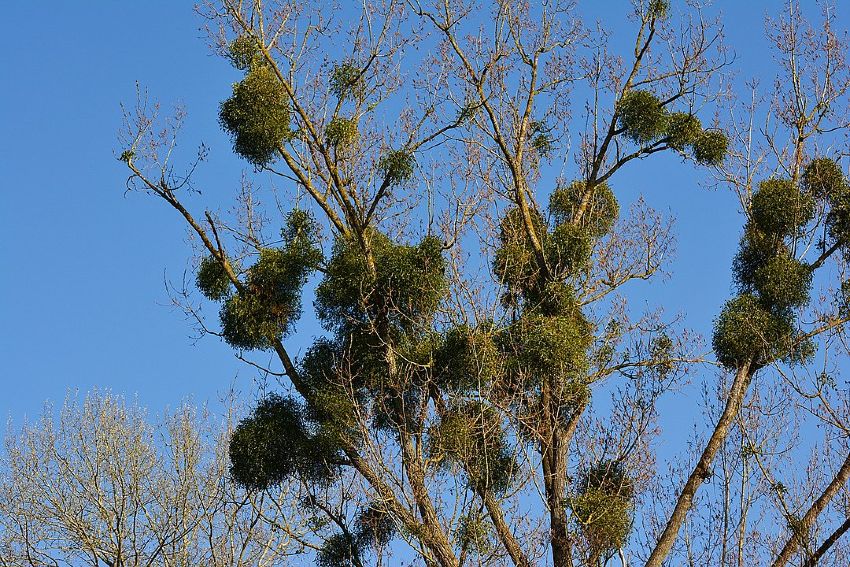Today we’re looking at a tradition that they say brings you love and good luck as you get ready for the new year.
No, I don’t mean binge-watching all the new Hallmark movies.
I’m talking about mistletoe.
Mistletoe, let’s state right out of the gate, is a parasite
It gets its nutrients by, well, stealing them from trees.
That’s why it blooms even in the winter, and that is why people in olden times associated mistletoe with renewal and fertility.
It’s also long been a part of natural medicine, as a remedy for everything from cramps to ulcers.
How do we get from all this to the kissing tradition?
Possibly from a story from Norse mythology, in which the goddess of love, Frigg, promised to kiss anyone who passed underneath mistletoe to celebrate after the gods brought her son Baldur back to life.
By the 1700s, Europeans had a custom that men could expect a kiss from any woman standing underneath the mistletoe, and that refusing them was bad luck.
Which, put that way, is probably more in line with the parasitic side of the plant than the whole fertility and renewal thing.
I’m not sure if I know anyone who actually kisses under mistletoe, but I do know people who keep poinsettias, though none as big as the one Joanne Hill has.
A few years back she bought one from a grocery store in Montreal for five dollars.
She said it looked “half-dead” at the time, but three years later, after some care from her gardening-gifted husband, the plant is as big as a Christmas tree.
Good thing she didn’t also pick up some magic beans.
This Is Why We Kiss Under the Mistletoe (Readers Digest)
‘Crappy half-dead’ poinsettia from grocery store just won’t stop growing (CBC)
Our backers on Patreon are the ones who make this show grow!
Photo by congerdesign via Wikicommons/CC0

